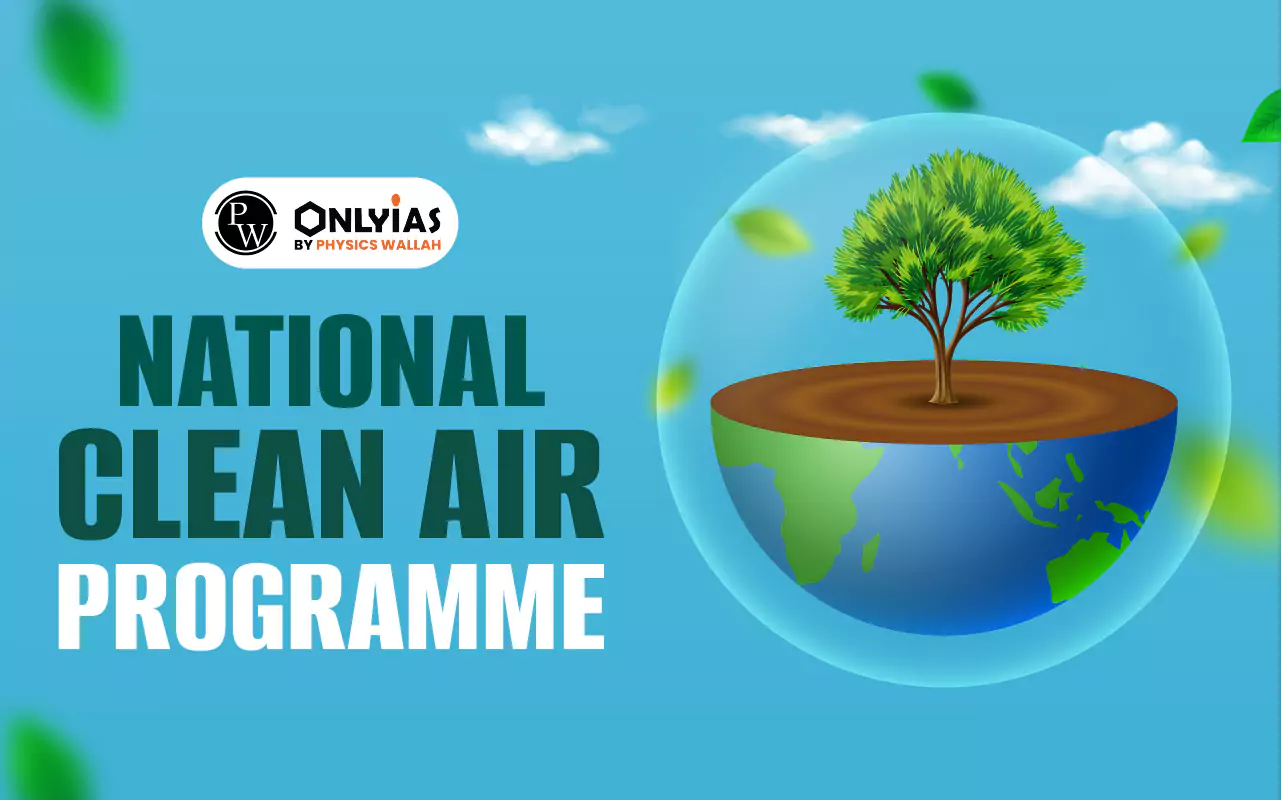National Clean Air Programme, launched in January 2019 by the Ministry of Environment, Forest and Climate Change, aims to reduce PM10 levels by 40% by 2025–26 in 131 non-attainment cities. It promotes sustainable air quality management, city-specific action plans, and real-time monitoring via the PRANA Portal. Challenges include limited resources, inter-department delays, and data gaps. So far, 71% of funds have been utilized to implement pollution control measures.

National Clean Air Programme was a plan launched in 2019 by the Ministry of Environment, Forest and Climate Change to address rising air pollution in cities. The main aim behind this program is to bring down levels of PM2.5 and PM10 particles by 20–30% in the coming years. It focuses especially on cities that have failed to meet national air quality standards for several years.
The National Clean Air Programme focuses on sustainable, long-term solutions. It brings together multiple stakeholders i.e., governments, local bodies, experts, and citizens to work collectively on improving air quality.
The National Clean Air Programme, or NCAP, is a central government initiative launched by the Ministry of Environment, Forest and Climate Change (MoEFCC) in January 2019. It is India’s first-ever national-level effort to improve air quality across cities through strategic planning and targeted interventions.
This programme serves as a framework for action across states and union territories. The focus is on non-attainment cities that consistently fail to meet the National Ambient Air Quality Standards (NAAQS). Here’s an overview of the National Clean Air Programme:
| National Clean Air Programme | |
| Particulars | Details |
| Launch Year | January 2019 |
| Launched By | Ministry of Environment, Forest and Climate Change |
| NCAP Full Form | National Clean Air Programme |
| Target | 40% reduction in PM10 levels by 2025–26 |
| Coverage | 131 non-attainment cities |
| Monitoring Tool | PRANA Portal |
The government also launched the PRANA Portal which is the Portal for Regulation of Air Pollution in Non-Attainment Cities. The main aim behind its launch was to strengthen the implementation and monitoring of NCAP. This web-based platform helps track real-time data on air quality action plans and progress across cities.
PRANA Portal plays an important role in ensuring transparency and accountability. It allows citizens, officials, and stakeholders to know about pollution control measures and their effectiveness.
The objectives of the National Clean Air Programme are multi-dimensional and focus on creating a healthier and cleaner environment. Some of the objectives are:
These National Clean Air Programme objectives are about creating long-term, sustainable air quality solutions.
The features of the National Clean Air Programme offer a detailed framework for city-specific action. Key features of NCAP include:
Initially, the National Clean Air Programme targeted 102 non-attainment cities based on 2011–2015 air quality data. Over time, the list has been expanded to 131 cities across India. It includes major urban areas like Delhi, Mumbai, Kolkata, and smaller cities like Gaya, Varanasi, and Lucknow.
Of these 131 cities, 123 are non-attainment cities (NACs) that failed to meet national air quality standards for five consecutive years. The rest include million-plus cities identified by the 15th Finance Commission for performance-based air quality grants. Out of 42 million-plus cities, 34 are also part of NCAP.
The selection of these cities was based on consistent violations of air quality standards and their potential to benefit from targeted interventions.
As the NCAP gives hope, implementing the programme comes with its share of challenges:
MoEF&CC has released performance-linked grants of Rs. 13,036.52 crore under NCAP. Out of this, 71% (Rs. 9209.44 crore) has been utilized so far by 130 cities. From April to July 2025 (till 18th July), Rs. 1825.39 crore has been released to support action plans for air quality improvement.
Out of 130 cities, 48 Million-Plus Cities/Urban Agglomerations are funded under the 15th Finance Commission’s Million-Plus City Challenge Fund, while the remaining 82 cities are covered under the Control of Pollution Scheme of MoEF&CC.
Cities are required to implement key measures such as end-to-end road pavement, mechanical road sweeping, greening of traffic corridors, and improvement of traffic junctions for decongestion.
Revised guidelines for fund utilization were issued on 25th August 2022 and 14th May 2025 to ensure better planning and implementation.
| UPSC Mains Question: What are the key features of the National Clean Air Programme [NCAP] initiated by the Government of India.[250 Words,15 Marks] |
|---|
Ready to boost your UPSC 2026 preparation? Join PW’s UPSC online courses today!
National Clean Air Programme is a government strategy to reduce air pollution levels across Indian cities. The aim is to bring down PM10 levels by up to 40% or meet the national air quality standards (60 µg/m³) by 2025–26.
NCAP full form is the National Clean Air Programme.
PRANA Portal is an online dashboard used to monitor and track the progress of air pollution control efforts under NCAP.
The main objective of this programme is to reduce particulate pollution, improve monitoring systems, and promote public involvement in air quality management.
The National Clean Air Programme was launched in January 2019.

<div class="new-fform">
</div>